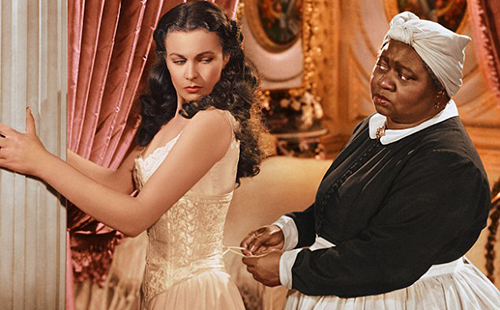
Nationwide — 78 years after the publication of Margaret Mitchell’s infamous “Gone With the Wind”, and 75 years after the release of the Oscar-winning film, a new book is being released as a prequel detailing the life and story of Mammy.
Ruth’s Journey by Donald McCaig (released October 14th) finally gives Mammy a name and a back story, and the story begins with her childhood in Saint-Domingue which later became what is now known as Haiti. The story details her family’s experiences during the slave rebellion against France.
McCaig told USA Today: “Mammy is one of the truly powerful figures in the book and movie and, oddly enough, one of the figures nobody tends to think much about. When people say what is ‘Gone With the Wind’ about, they say it’s a love story between Rhett Butler and Scarlett O’Hara. But Mammy is almost a third party.”
Written in a different style from the original “Gone With The Wind”, most of the book is written in third person, but towards the end Mammy takes over the narrative, and readers start to hear her actual voice. McCaig admits this was risky, but says he thinks its the best part of the book. He admits that the book uses the n-word, but defends it as necessary component in a story about the times when the word was used.
Ruth’s Journey is actually the first prequel (but third addition to the original book) to be authorized by the Margaret Mitchell estate since the release of the film in 1939. Mitchell died in 1949, but her legacy has lived on through her film and book, which has earned the title of one of the greatest American fictional stories of all time.
Actress Hattie McDaniel, who played Mammy in the film and became the first African American to ever win an Oscar for her performance, has also lived on in her legacy. Other Black actors who have since won Oscars (including Denzel Washington, Halle Berry and Jamie Foxx) have all credited her for paving the way.
The book is available on Amazon.com, BarnesandNoble.com and all major book retailers. Published via Atria Books, it has 384 pages
FRENCH VERSION
Nationwide — 78 years after the publication of Margaret Mitchell’s infamous “Gone With the Wind”, and 75 years after the release of the Oscar-winning film, a new book is being released as a prequel detailing the life and story of Mammy.
Ruth’s Journey by Donald McCaig (released October 14th) finally gives Mammy a name and a back story, and the story begins with her childhood in Saint-Domingue which later became what is now known as Haiti. The story details her family’s experiences during the slave rebellion against France.
McCaig told USA Today: “Mammy is one of the truly powerful figures in the book and movie and, oddly enough, one of the figures nobody tends to think much about. When people say what is ‘Gone With the Wind’ about, they say it’s a love story between Rhett Butler and Scarlett O’Hara. But Mammy is almost a third party.”
Written in a different style from the original “Gone With The Wind”, most of the book is written in third person, but towards the end Mammy takes over the narrative, and readers start to hear her actual voice. McCaig admits this was risky, but says he thinks its the best part of the book. He admits that the book uses the n-word, but defends it as necessary component in a story about the times when the word was used.
Ruth’s Journey is actually the first prequel (but third addition to the original book) to be authorized by the Margaret Mitchell estate since the release of the film in 1939. Mitchell died in 1949, but her legacy has lived on through her film and book, which has earned the title of one of the greatest American fictional stories of all time.
Actress Hattie McDaniel, who played Mammy in the film and became the first African American to ever win an Oscar for her performance, has also lived on in her legacy. Other Black actors who have since won Oscars (including Denzel Washington, Halle Berry and Jamie Foxx) have all credited her for paving the way.
The book is available on Amazon.com, BarnesandNoble.com and all major book retailers. Published via Atria Books, it has 384 pages


